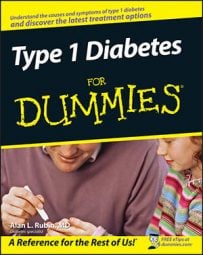Diabetic ketoacidosis (DKA) is a severe diabetic complication that has to be managed in a hospital. It’s characterized by high blood glucose (though it need not be very high) associated with an acid condition of the blood due to the production of ketones, which are the products of fat breakdown. The root of the illness is a lack of insulin.
Without enough insulin, glucose can’t get into insulin-dependent cells like muscle and the liver, so glucose accumulates in the blood, and the body turns to fat for energy.
Major symptoms include the following:
Abdominal pain
Frequent urination and thirst
Nausea and vomiting
Weakness
Weight loss
Smell of acetone on the breath
Confusion or coma
Cold skin and body temperature
Rapid, shallow breathing followed by deep, labored breathing
If you suspect that your child has DKA, there are a couple of quick tests you can do at home to verify the diagnosis:
Check the blood glucose with your home meter. With DKA, the meter will generally read greater than 250 mg/dl, but some cases of mild DKA may have a glucose reading under 250 mg/dl.
Check the urine for ketones. With DKA, the reading will be high.
After you verify DKA with a home test, or if you suspect that you or your child has DKA even without a diagnosis of type 1 diabetes, dial 911 and then call your doctor to tell him or her that you’re on the way to the hospital.

